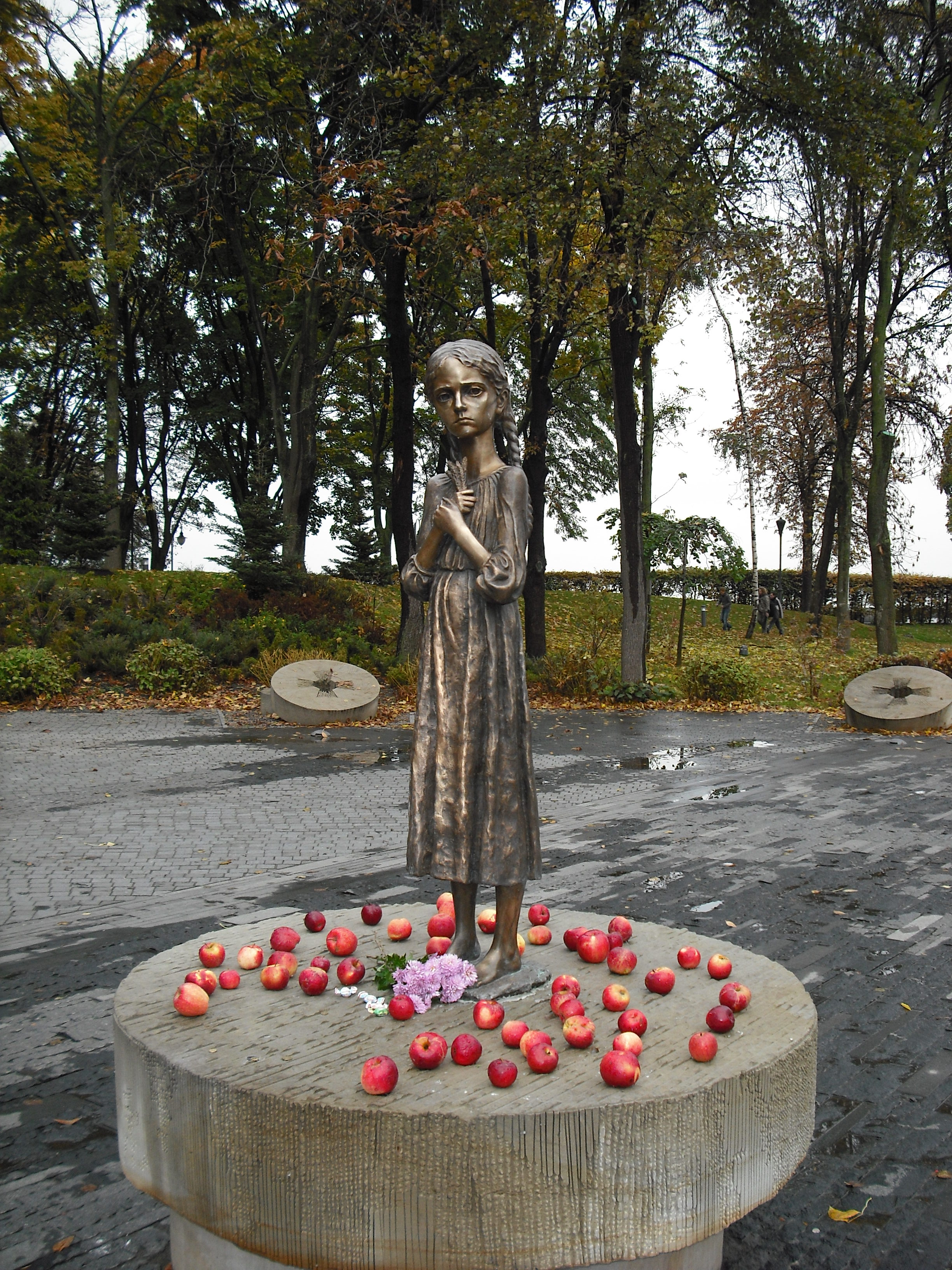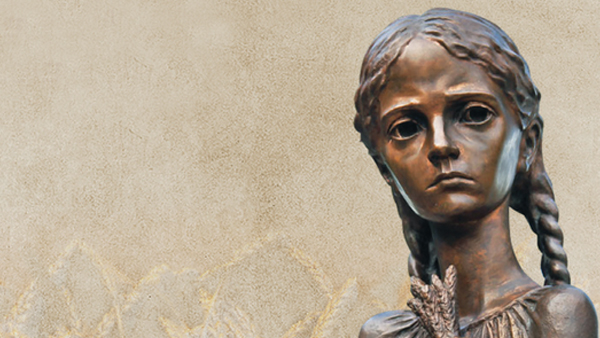|
A symposium commemorating the 85th anniversary of the Holodomor-Genocide against the Ukrainian Nation will be held Oct. 5 from 8 a.m. to 5 p.m. at the Henry Madden Library, Room 2206.
Women and Holodomor-Genocide: Victims, Survivors, Perpetrators
The year 2018 marks the 85th anniversary of the Holodomor – the Ukrainian famine-genocide. “Holod” means “hunger” and “moryty” means to “exterminate” or “starve to death.”
Join special guests who will speak about the tragic famine perpetrated on millions of Ukrainians as part of a genocide carried out by the Soviet government in 1932-1933.
The event is free and open to the public.
See flyer.
See program.
Contact Dr. Victoria Malko (History) at vmalko@csufresno.edu for more information and to RSVP.
Symposium Details
To mark the solemn 85th anniversary of the Holodomor, the famine-genocide perpetrated by Soviet dictator Joseph Stalin that killed millions in Ukraine, the Ukrainian World Congress and its member organizations worldwide are conducting an international action called “Light a Candle of Remembrance” for 85 days until Holodomor Memorial Day on November 24. The UWC explained that “a candle will be lit daily in a different part of the world, uniting Ukrainians and friends of Ukraine in remembrance of the innocent victims of the genocidal policy of the Stalin regime, while raising awareness of the issues of human rights, respect and tolerance.”
Sixty-five years ago, Dr. Raphael Lemkin (1900-1959), a lawyer of Polish Jewish background, who coined the term “genocide” and authored the U.N. Convention on the Prevention and Punishment of the Crime of Genocide, was invited to speak at the commemoration of the Great Famine, held at New York’s Manhattan Center in 1953. Professor Lemkin expanded his discourse beyond the peasants and the famine and spoke of the genocide as a four-pronged destruction of the Ukrainian nation. First, the Soviet attack on the Ukrainian intelligentsia, the “brain” of the nation. Second, the Soviet destruction of Ukrainian religious institutions, the “soul” of the nation. Third, the destruction of Ukraine’s independent farmers, “the repository of the tradition, folklore and music, the national language and literature,” in short, “the national spirit,” which occurred on mass scale during the famine of 1932-1933. Fourth, the fragmentation of the Ukrainian people by the addition of foreign peoples and the dispersion of Ukrainians throughout Eastern Europe to destroy ethnic unity. The text of the speech was located in the Rare Books and Manuscripts Division of the New York Public Library half a century later.
Highlighting similarities between Hitler’s attack on the Jews and Stalin’s steps in the systematic destruction of the Ukrainian nation, Lemkin called it “the classic example of Soviet genocide”:
Notably, there have been no attempts at complete annihilation, such as was the method of the German attack on the Jews. And yet, if the Soviet program succeeds completely, if the intelligentsia, the priests and the peasants can be eliminated, Ukraine will be as dead as if every Ukrainian were killed, for it will have lost that part of it which has kept and developed its culture, its beliefs, its common ideas, which have guided it and given it a soul, which, in short, made it a nation rather than a mass of people. The mass, indiscriminate murders have not, however, been lacking – they have simply not been integral parts of the plan, but only chance variations. Thousands have been executed, untold thousands have disappeared into the certain death of Siberian labor camps.
This is not simply a case of mass murder. It is a case of genocide, of destruction, not of individuals only, but of a culture and a nation.
In the speech excerpted above, Lemkin estimated that between 1932 and 1933, 5 million Ukrainians starved to death, “an inhumanity which the 73rd Congress decried on May 28, 1934.” Recently, Ukrainian historians have uncovered new documentary evidence that allows to put the total number of victims at over 7 million.
The second symposium is designed to raise awareness about the genocide against the Ukrainian nation that has been edited out of history for more than half a century. Discussions of gender aspects of the Holodomor will help personalize the history of genocidal practices in Ukraine and their consequences. The goal is to help high school teachers, college and university faculty develop curricula for teaching the subject.
In addition, a multimedia projects contest, “Youth Voices Brining Human Rights to Life,” will be held for middle, high school, college, and university students. Winners will be invited to present their projects.
The symposium will open at 8:00 a.m., Friday, October 5, with a poster exhibit “We were killed because we are Ukrainians” presented by the Holodomor Victims Memorial. The program will conclude with singing epic songs performed by Ola Herasymenko-Oliynyk, Merited Artist of Ukraine.
Renowned speakers from Canada, Italy, UK, and Ukraine will share their stories and research findings. Dr. Myroslava Antonovych, Director, Centre for International Human Rights, National University of Kyiv-Mohyla Academy, Ukraine, will focus on the three techniques of genocide—biological, physical, and cultural eradication of the Ukrainian nation.
Dr. Olga Bertelsen, Visiting Research Scholar, Robert Schuman Centre for Advanced Studies, European University Institute, Florence, Italy, will share her findings on the least investigated phenomenon of survivor cannibalism at sites of genocide in Soviet Ukraine. Her study of women’s behavior at the peak of the famine is an initial step in writing a social history of the Holodomor.
Daria Mattingly, Ph.D. Candidate in Slavonic Studies, University of Cambridge, UK, will focus on the roles the women played in the mechanism of the famine on district and village levels as perpetrators. This is one of the first comprehensive studies of female perpetrators of the Holodomor, their characteristics and institutional affiliations.
Jars Balan, Director, Canadian Institute of Ukrainian Studies, University of Alberta, Canada, will speak about a journalist from Toronto named Rhea Clyman, who made a journey by car through the agricultural heartland of the Soviet Union and witnessed famine in Ukraine in 1932. Clyman was abruptly arrested by the Soviet secret police and given twenty-four hours to leave the country for allegedly spreading “false news” about the Soviet Union. Rhea’s expulsion on the order of the Politburo, the first by Soviet authorities of a Western journalist in eleven years, was reported in scores of newspapers across North America, Europe and around the world.
Historian and academician Volodymyr Serhiychuk from Taras Shevchenko National University, Kyiv, Ukraine, will present a lecture and sign copies of his new book, Holodomor of 1932-1933 as Genocide against Ukrainians.
The program will also include a one-act play, “Buried Truth,” written and performed by George Wyhinny, at the Fresno Art Museum’s Bonner Auditorium. Told from the point of view of four journalists, one who lied and three others who tried to expose him and Joseph Stalin for their lies: how millions of Ukrainians were slaughtered and how the Kremlin hid these atrocities from the Western world. Using primary source documents, first-hand accounts, and witness testimonials, this piece memorializes the victims and celebrates Ukraine’s heroes.
See poster.
Screening of Hunger for Truth: The Rhea Clyman Story will be held a month later, on November 9, 2:30 to 5 p.m., at the University Business Center Alice Peters Auditorium. This feature length documentary was an official selection at the 2018 USA Film Festival in Dallas, where it won Honorable Mention in the International Short Film Competition. Post-screening discussion with Emmy award-winning filmmaker Andrew Tkach and Dr. Michelle DenBeste, Dean of the College of Social Sciences, will follow.

|
|
"Bitter Memory of Childhood," a haunting statue dedicated to the most vulnerable victims of the Ukrainian famine-genocide at the Holodomor Victims Memorial in Kyiv, Ukraine.
|
|



